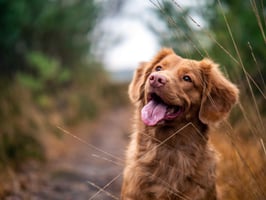Food aggression in dogs can be a difficult behaviour to manage. Dogs that are food aggressive can...
Taming an Aggressive Dog: How to Stop Unwanted Behaviour
Dogs are naturally loyal and obedient animals, but sometimes they can display aggressive behaviour which can be difficult to manage. If your dog is showing signs of aggression, it is important to take the necessary steps to stop it. This article will provide you with advice on how to stop a dog from being aggressive and help you to create a safe and peaceful environment for yourself, your family, and your pet.
Assess the Situation
Before you attempt to stop your dog’s aggressive behaviour, it is important to assess the situation and understand why your dog is displaying aggression in the first place. It could be due to fear, insecurity, or a lack of socialisation. Identifying the cause of the aggression will help you to devise a plan to address the problem.
In some cases, aggression can be the result of a medical condition. If your dog is displaying signs of aggression, take it to the vet for a check-up to rule out any underlying medical issues.
Create a Training Plan
Once you have identified the cause of the aggression, it is time to create a training plan. This plan should include positive reinforcement techniques, such as rewards, to help your dog learn the desired behaviour. It is important to remember that training should be done in a calm and controlled environment, as aggression can worsen when your dog is in a stressful situation.
It is also important to be consistent with your training. Make sure that all family members are on board with the plan, as any inconsistency could cause confusion for your dog and lead to further aggression.
Set Boundaries
It is important to set boundaries for your dog and help it understand what behaviour is acceptable and what is not. This can be done by establishing a routine and sticking to it. This will help your dog understand what is expected of it and will make it easier for you to implement any training techniques.
You should also set boundaries when it comes to physical contact. If your dog is displaying aggressive behaviour, it is important to avoid physical contact and only give rewards when the desired behaviour is displayed. This will help your dog understand that it will be rewarded for good behaviour.
Seek Professional Help
If your dog’s aggressive behaviour persists, it is important to seek professional help. A qualified dog behaviourist can provide you with advice on how to manage the situation and provide you with a tailored training plan. They can also help you to identify any underlying causes of the aggression and provide you with strategies to address them.
It is important to remember that aggressive behaviour can be difficult to manage, so seeking professional help is often the best course of action.
Be Patient and Consistent
It is important to be patient and consistent when it comes to managing your dog’s aggressive behaviour. It may take some time for your dog to learn the desired behaviour and it is important to remain patient and consistent during this time. It is also important to remember that any punishment should be avoided, as this could worsen the aggression.
Make sure to reward your dog when it displays the desired behaviour. This will help to reinforce the behaviour and make it easier for your dog to learn.
Conclusion
Dogs are naturally loyal and obedient animals, but sometimes they can display aggressive behaviour which can be difficult to manage. If your dog is displaying signs of aggression, it is important to assess the situation and understand why your dog is displaying aggression in the first place. Once you have identified the cause of the aggression, it is important to create a training plan and set boundaries for your dog. If the aggression persists, it is important to seek professional help. It is also important to be patient and consistent when it comes to managing your dog’s aggressive behaviour.
By following the advice in this article, you will be able to stop your dog from being aggressive and create a safe and peaceful environment for yourself, your family, and your pet.



